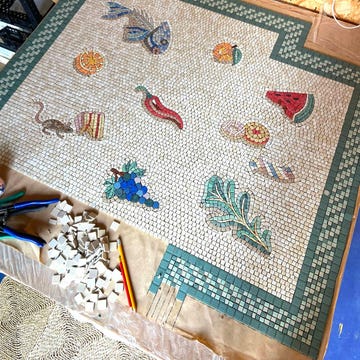Mix shades. Combining cool and warm tones in just the right way is very important. For example, green (above) and pink, yellow and grey, turquoise and orange.
Play with contrasts – soft and hard; dark and light; thick and thin; bold and subtle – in colours, materials and details (concrete ceilings with velvet upholstery above). We like to make designs that use objects of varying sizes and in different materials. Sometimes the relationships are harmonious, sometimes they jar; it’s this dialogue between the two that gives a project its identity.
Create surprises. For example, the exterior can have a contradictory style to what’s on the inside – in colour, material or texture (smooth curves with rough tiles above). When you expect everything to be one way, it should absolutely be another.
What's everyone reading?
Use colour. Alternatively, work with just one colour for emphasis. We did this at the Futurice office (above) in Berlin where each team space had a distinct colour, wall paint, carpet, furniture, lighting and fabrics all in one hue. esterbruzkus.com
This article appeared in the March 2020 issue of ELLE Decoration.
Like this article? Sign up to our newsletter to get more articles like this delivered straight to your inbox
Keep up your spirits up and subscribe to ELLE Decoration here, so our magazine is delivered direct to your door.















